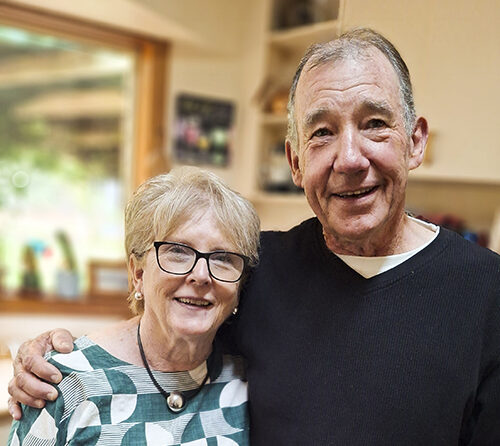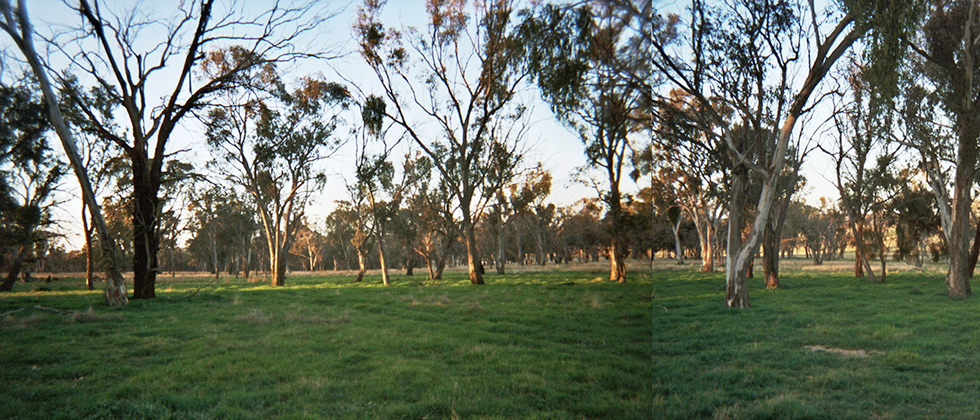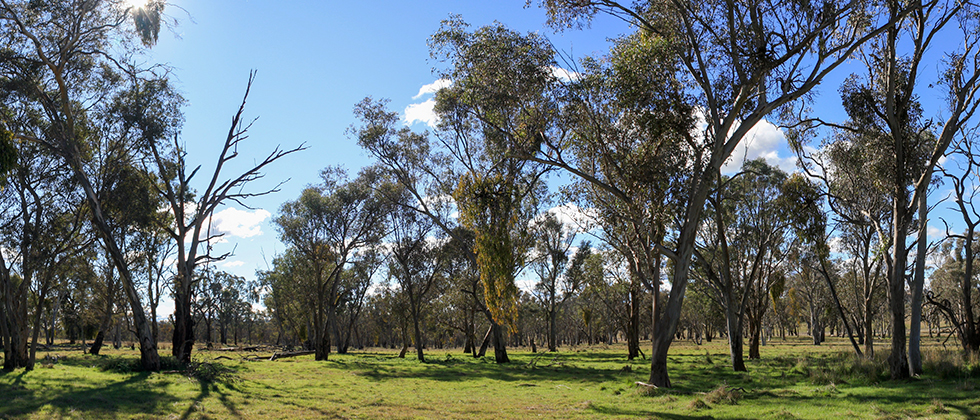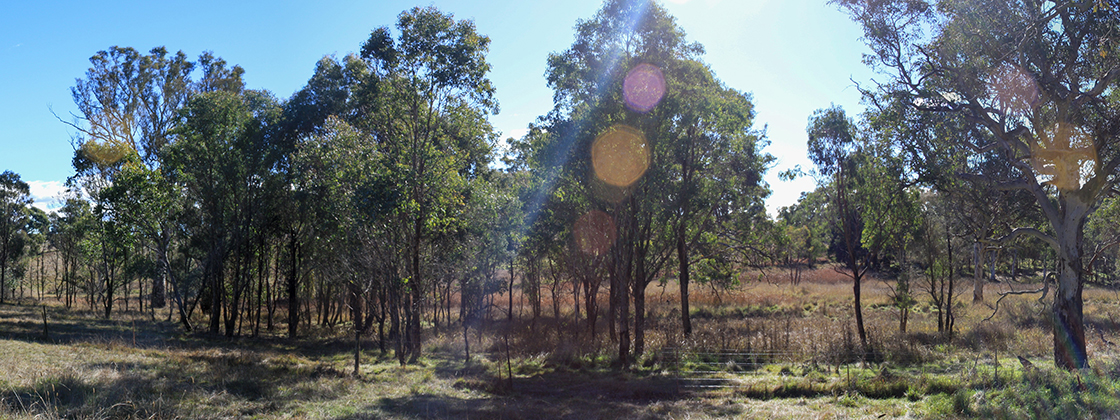Neil and Marg Stuart, Glanmire
Glanmire, NSW
Neil and Marg Stuart are using strategic grazing management to restore the health of the remnant woodland on their farm property.

Neil and Marg Stuart operate Glanmire, around 800 hectares in the Lachlan catchment of NSW. The Stuarts run merinos for wool production and they see their farm as dual-purpose: production and restoration.
“We have good sheep, but they’re just the income providers, you know,” says Neil. “We’re trying to sort of get this landscape back to where it should be.”
After capturing the photo below in 2008, Neil commented, “This is not a feel good story. Look at the trees. Look at how unhealthy they are… They’re dying. All of those trees are dying. In 20 years you’ll come back here and not one of those trees will be alive. They’re all smooth bark gums. There’s a few Yellow Box in there, and they’ll be the healthy ones… But all those trees are dying, and they have been dying very gradually and very slowly for 15 years. Every time I go in there I just think, why?”
The Stuarts made a decision to drastically reduce grazing pressure in the paddock to give the trees a “fighting chance”.
Deteriorating tree health in 2008
(Photo: Neil Stuart)

The same site in 2024
(Photo: Kate Sherrin)

“Yeah, the foliage on the trees is quite evidently much, much better,” says Neil. “I just always assumed the reason for it was the sheep weren’t in there all the time and there’s just not this overload of nitrates in the soil affecting the foliage. Because I’m fairly convinced that that was what dieback was all about.”
"Because just looking around generally at all the trees, they’re so much healthier since set stocking has stopped.” – Neil Stuart
On another area of the property, photos demonstrate the successful results of grazing pressure reduction in a riparian zone.
“The thing I didn’t do was take a picture of this before … Because it was just totally and utterly denuded. It was just bare, bare ground, and you know it was just horrible. And there was the creek running through it, sheep were going over the creek, and they were grazing here, and the creek sides were… It was eroding,” says Neil.
Comparing the photos below to his memory of the degraded site, he adds, “That is, you know, just so totally different… It’s just amazing. And you know, obviously we’ve helped it along a little bit… We fenced off the creek… And yeah, it’s just made a huge difference, a huge difference.”
Regeneration in the riparian zone in 2008 (Photo: Neil Stuart)

The same site in 2024
(Photo: Kate Sherren)

“If you’ve got something that’s being denuded and overworked and not producing and whatever, it’s not very good on your soul. If you can see what’s happening. But if you can repair it, and then you go and out and you think, this is great, this is good. Well, it’s just a positive vibe that you get from the place rather than a negative vibe… I just wanted to be happy and not worrying about everything all the time and working my guts out. And I wanted to see the place healthy again, because we’d just overdone it.”
If the Stuarts had not invested in their environmental restoration, Marg adds, “We wouldn’t be here probably.”
This story is a case study undertaken by Professor Kate Sherren, Dalhousie University, NS, Canada, with support from the Australian National University.
Share your story of managing natural assets on your farm
Help give other farmers an insight into what you’ve tried on your farm to work towards a sustainable farming future. Have you planted trees or fenced a dam? What have you noticed? What’s worked and what hasn’t?
Submit your story
